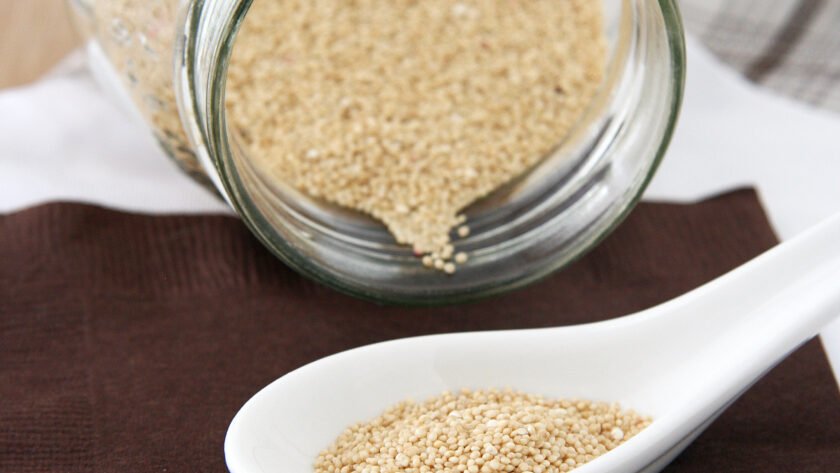The word amaranth means “everlasting” in Greek. Indeed, this tiny seed has endured the ages, as an important food source for ancient civilizations in South America and Mexico, to its current resurgence as a highly nutritious gluten-free grain.
Top 10 Reasons to Use Amaranth in Gluten-Free Recipes
- Amaranth contains more protein than any other gluten-free grain- and more protein than wheat. One cup of raw amaranth contains 28.1 grams of protein. Oats are a close second with 26.3 grams of protein. In comparison, 1 cup of raw white rice contains 13.1 grams of protein.
- Amaranth is an excellent source of lysine, an important amino acid (protein). Grains are notorious for low lysine content, which decreases the quality of their proteins. The high lysine content in amaranth sets it apart from other grains. Food scientists consider the protein content of amaranth of high “biological value”, similar in fact, to the proteins found in milk. This means that amaranth contains an excellent combination of essentialamino acids and is well absorbed in the intestinal tract.
- Another advantage of the protein content of amaranth is that the primary proteins in amaranth are “albumins” and “globulins”. In comparison, the major proteins in wheat are called “prolamins”, which are considered less soluble and less digestible than are albumins and globulin proteins. Bottom line- the amount, types and digestibility of proteins in amaranth make it an excellent plant source of high quality proteins.
- Amaranth is second only to teff in calcium content. 1 cup of raw teff contains 347 milligrams of calicum, amaranth 298 milligrams. In comparison, 1 cup of white rice contains 52 milligrams.

- Amaranth contains more magnesium than other gluten-free grains. 1 cup of raw amaranth contains 519 milligrams of magnesium, followed by buckwheat with 393 milligrams and sorghum with 365 milligrams. In comparison, an equal amount of white rice contains 46 milligrams of magnesium.
- Amaranth contains more iron than other gluten-free grains. 1 cup of raw amaranth contains 15 milligrams of iron. Teff is a close second with 14.7 milligrams of iron. In comparison, white rice contains 1.5 milligrams of iron.
- Amaranth contains more fiber than other gluten-free grains. 1 cup of raw amaranth contains 18 grams of fiber- buckwheat and millet contain 17 grams. In comparison, white rice contains 2.4 grams of fiber.
- Amaranth is slightly lower in carbohydrate content compared to other gluten-free grains. 1 cup of raw amaranth contains 129 grams of carbohyrates, white rice 148 grams, brown rice and sorghum 143 grams and teff 141 grams of carbohyrdates. Oats contain 103 grams of carbohyrates, making them the lowest carb gluten free grain.
- Amaranth is a good source of polyunsaturated fatty acids (as are most whole grains) and it contains vitamin E in similar amounts to olive oil.
- When you add amaranth in amounts up to 25% of total flour used in gluten-free recipes you improve the nutritional value, the taste and texture of gluten free baked goods. Additionally, amaranth is an exceptional thickener for roux, white sauces, soups and stews.
Source: http://glutenfreecooking.about.com/od/nutritionmealplanning/a/amaranth.htm




